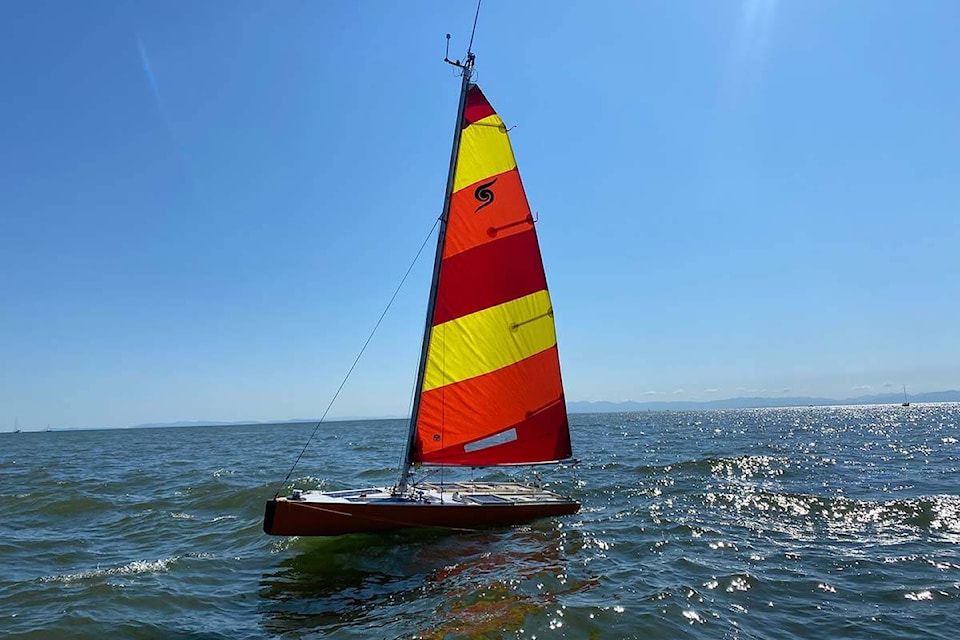For a competitive yacht racer, the 2,300-nautical mile journey between Victoria, B.C. and Maui, Hawaii can be completed in about 10 days. Undergraduate students at the University of British Columbia are hoping their self-sailing boat makes it in three weeks.
Raye is a fully-autonomous 18-foot sailboat, constructed from carbon fiber and powered by solar panels. Named after late naval architect Raye Montague, the sailboat is the product of six years of unpaid, not-for-credit work by dozens of UBC students.
Boat building is a long-standing tradition at the university, whose students started constructing semi-autonomous vessels in the early 2000s, launching inter-university competitions to test their creations. In 2014, students decided they were ready to take things one step further and produced their first ever fully-autonomous ocean-going boat, Ada, to take on a cross-Atlantic voyage.
B┤╬į¬╣┘═°═°ųĘ£Funnily enough, we got tired of winning. So we were looking to push ourselves even further and go for something more challenging,B┤╬į¬╣┘═°═°ųĘØ Raye co-captain and third-year engineering physics student Asvin Sankaran says, sitting inside UBCB┤╬į¬╣┘═°═°ųĘÖs Engineering Design Centre on an August morning.
Ada only made it about 700 kilometres into its journey from Newfoundland to Ireland in 2016 before it was hit by a hurricane, tearing its sail, breaking its rudder and water-logging its electrical components. The beaten-up boat drifted along for years before washing up in Florida.
Raye, Sankaran says, has been B┤╬į¬╣┘═°═°ųĘ£drastically improved,B┤╬į¬╣┘═°═°ųĘØ however, and stands a good chance of withstanding the Pacific. Its hull is broken into small watertight subsections, so if one area floods the rest remain protected. All of RayeB┤╬į¬╣┘═°═°ųĘÖs electrical components have also been waterproofed, and the team has built a stronger sail and added a second rudder.
The way Raye is able to sail without any human assistance or feedback is through a set of predetermined grid points it is programmed to seek out.
B┤╬į¬╣┘═°═°ųĘ£And then the boat is going to go B┤╬į¬╣┘═°═°ųĘśOkay the wind conditions are like this, my heading is like this, my GPS is this, I have to go hereB┤╬į¬╣┘═°═°ųĘÖ,B┤╬į¬╣┘═°═°ųĘØ Sankaran says. Raye is also capable of avoiding other seafaring vessels by using marine traffic technology and interpreting it into data points B┤╬į¬╣┘═°═°ųĘō an important skill when there are 13,000-foot cargo ships lurking about.
Still, Sankaran admits there are factors they simply cannot prepare for ahead of time. If a hurricane hits Raye, like with Ada, the small boat is unlikely to survive. And, even without a major storm, Raye could end up irreparably off course.
B┤╬į¬╣┘═°═°ųĘ£If she goes to Japan, she goes to Japan. If she goes to Hawaii, she goes to Hawaii,B┤╬į¬╣┘═°═°ųĘØ Sankaran says. Either way, he says, the project will have been an incredible learning experience.
Of course, success is still the goal.
B┤╬į¬╣┘═°═°ųĘ£If she does get to Hawaii, weB┤╬į¬╣┘═°═°ųĘÖre partying for weeks on weeks,B┤╬į¬╣┘═°═°ųĘØ Sankaran jokes.
They had hoped to launch Raye into international waters off Victoria last Saturday (Aug. 27), but faced challenging wind conditions. With just a one-week window left before weather systems shift in the Pacific, the team is now scrambling to see if they can release Raye from around Ucluelet or Tofino B┤╬į¬╣┘═°═°ųĘō where they believe conditions will be more favourable B┤╬į¬╣┘═°═°ųĘō over the September long weekend. If not, theyB┤╬į¬╣┘═°═°ųĘÖll have to wait until next year to test RayeB┤╬į¬╣┘═°═°ųĘÖs capabilities.
Regardless, theyB┤╬į¬╣┘═°═°ųĘÖre already thinking up next steps. The goal going forward is to have their boats collect climate data while out on the water. It will likely be a project taken up by the next round of engineering undergraduates, as students continue to pass down their knowledge from year to year.
jane.skrypnek@blackpress.ca
Like us on and follow us on .



